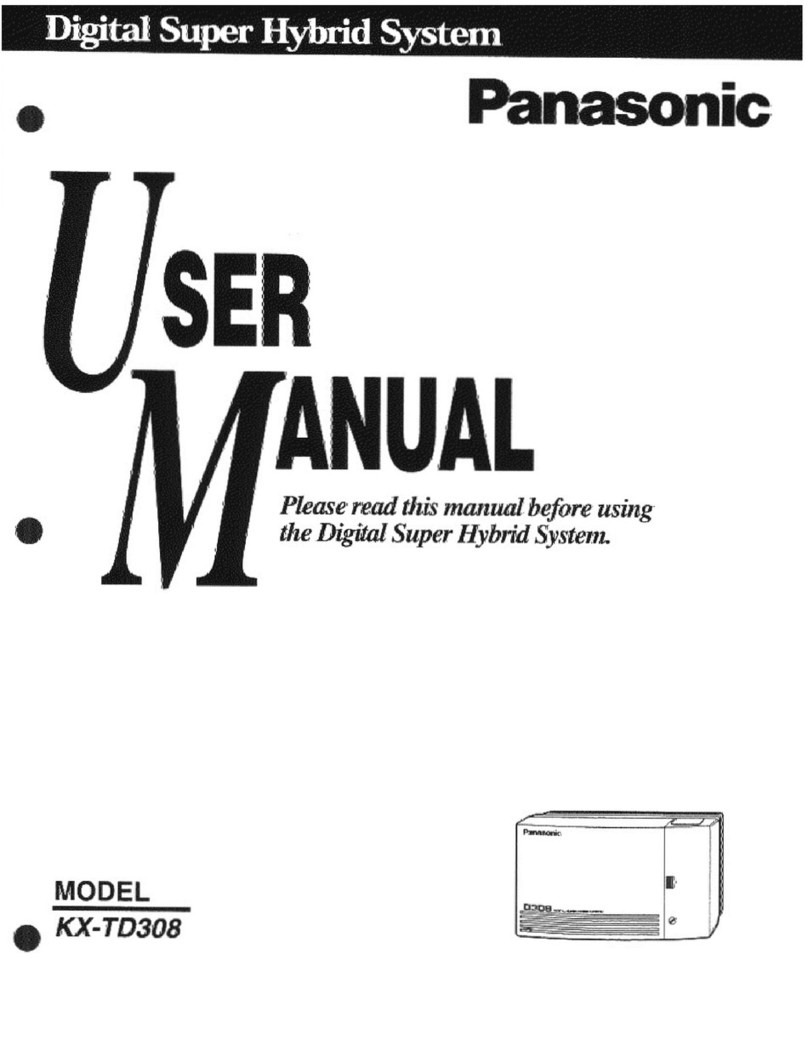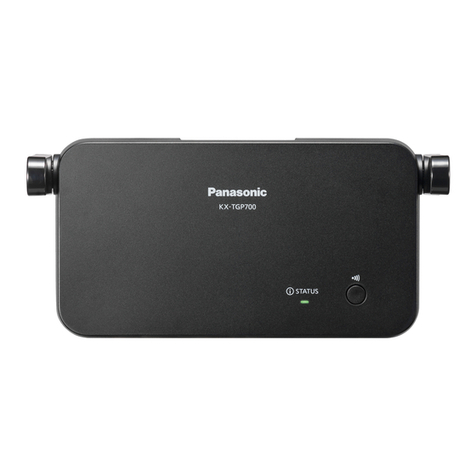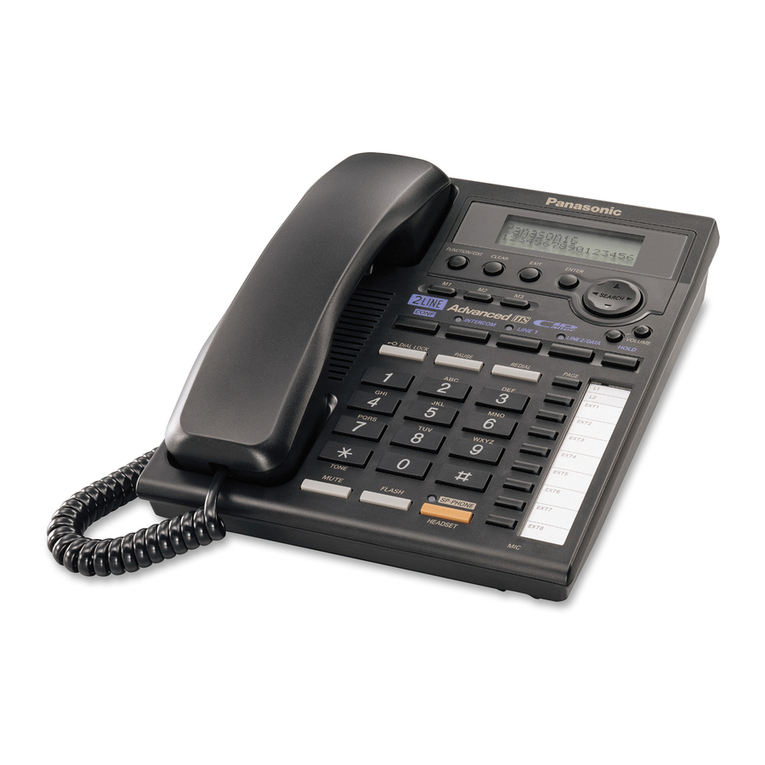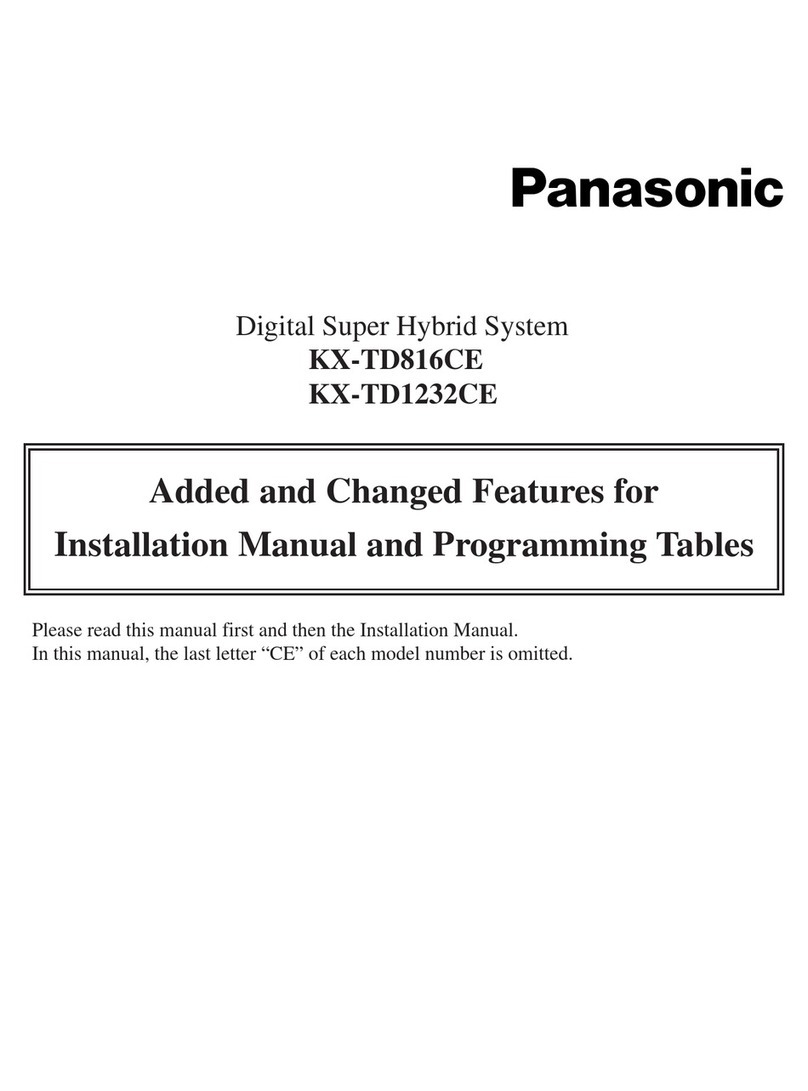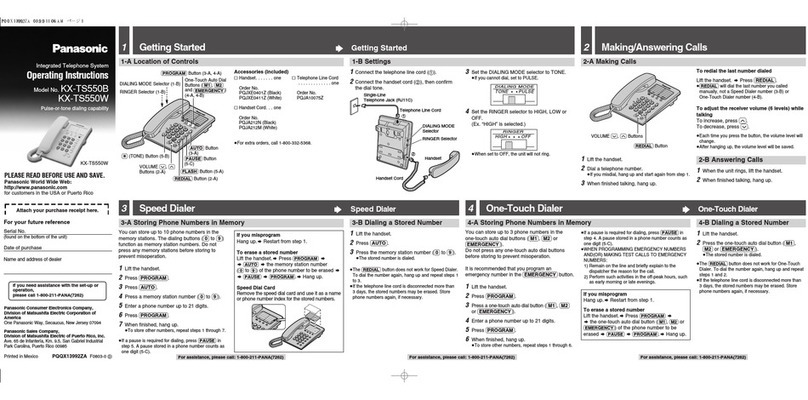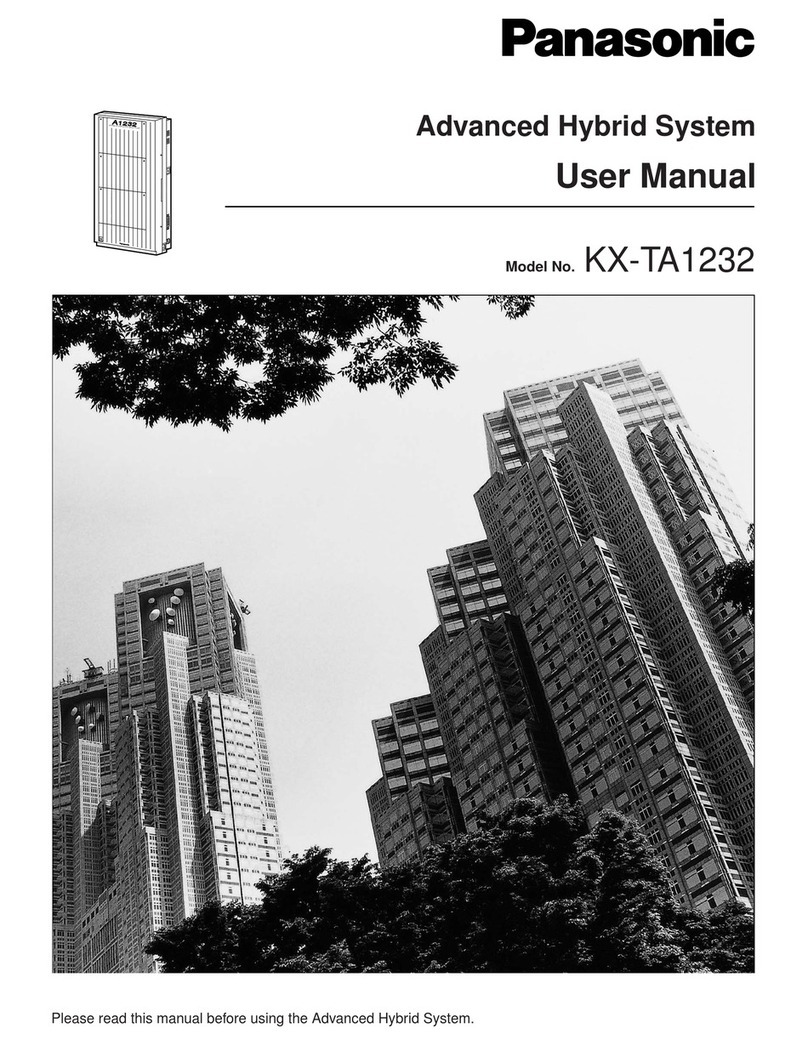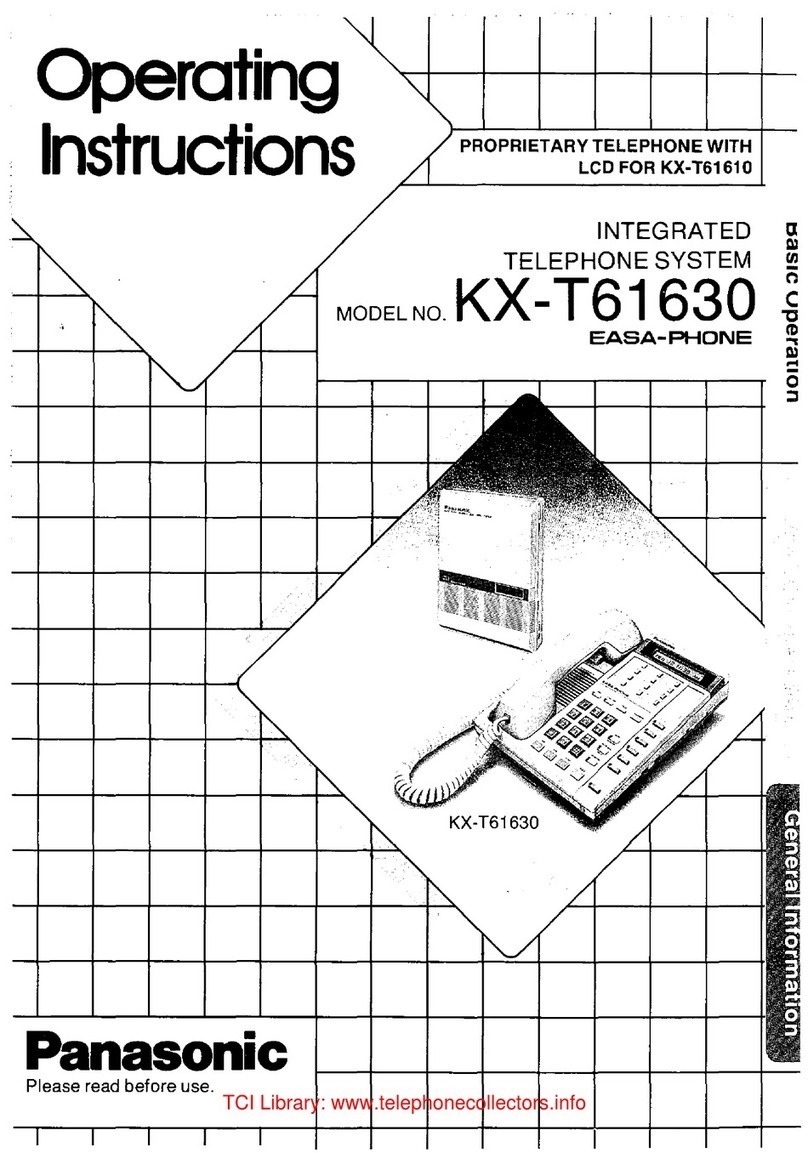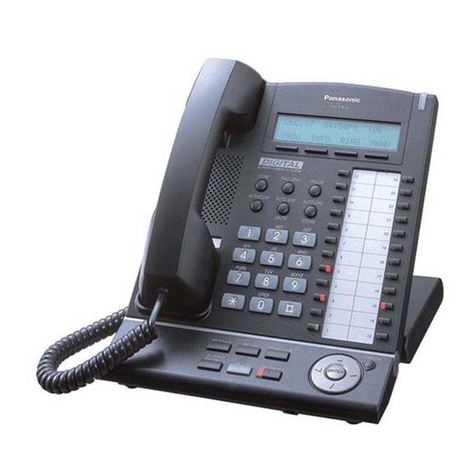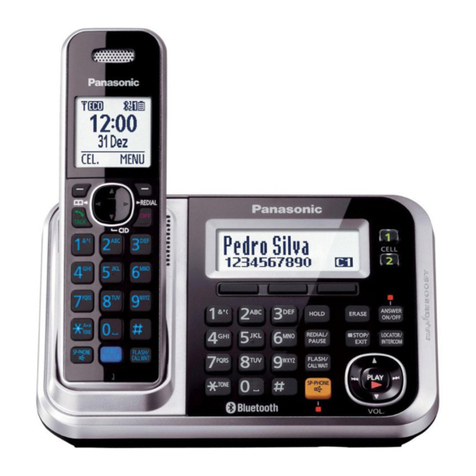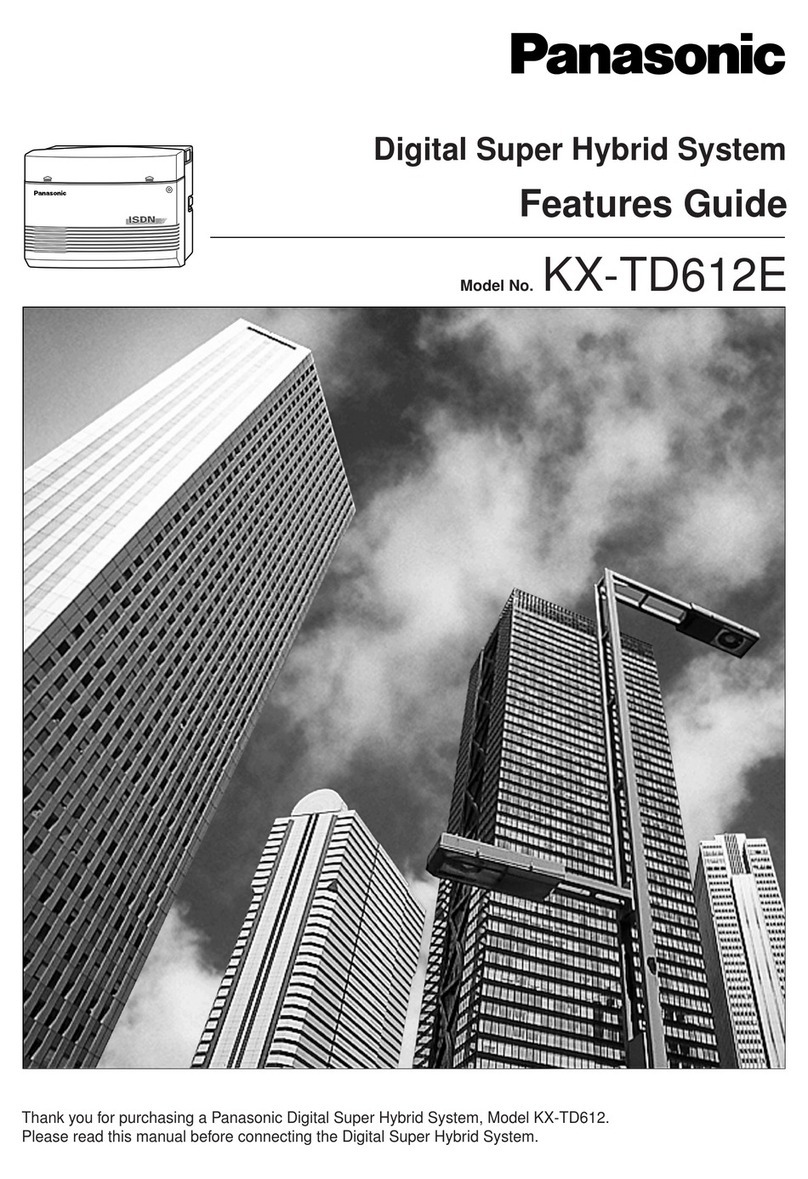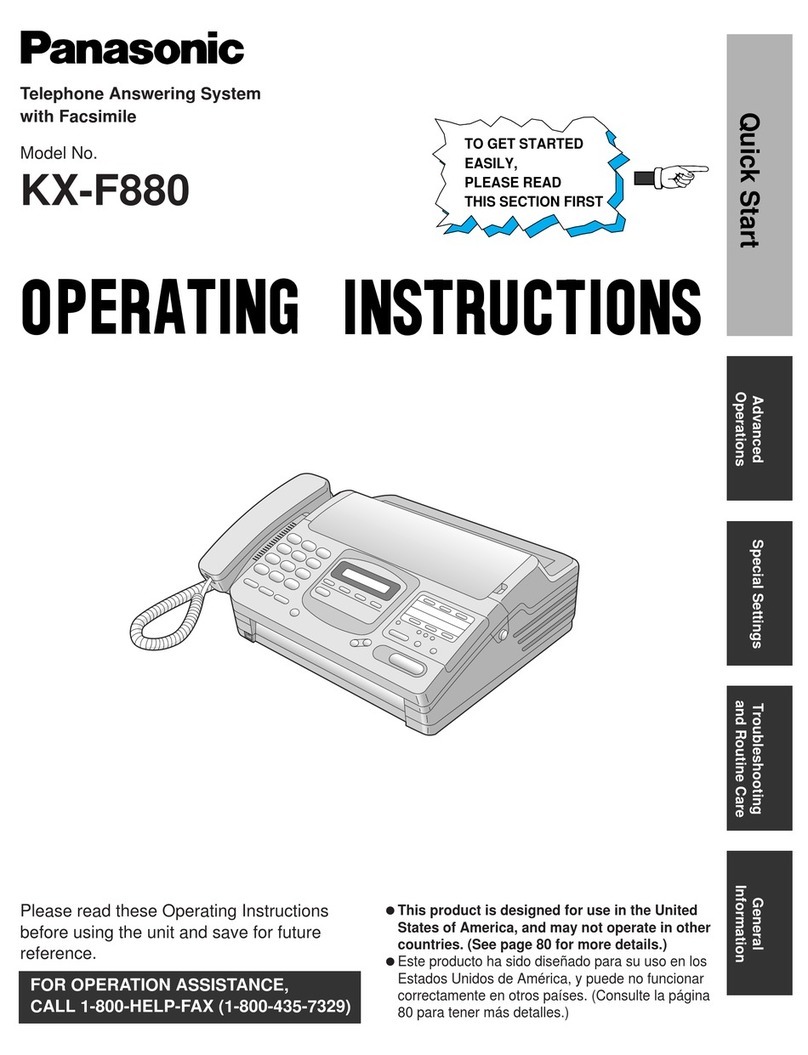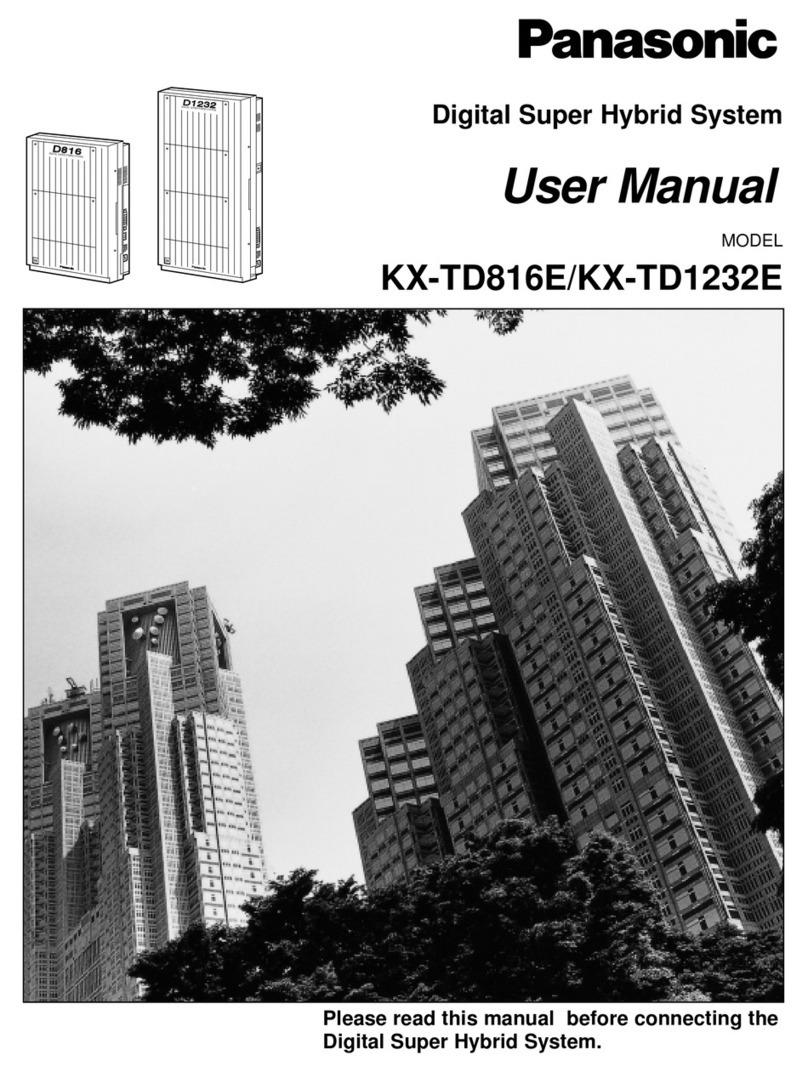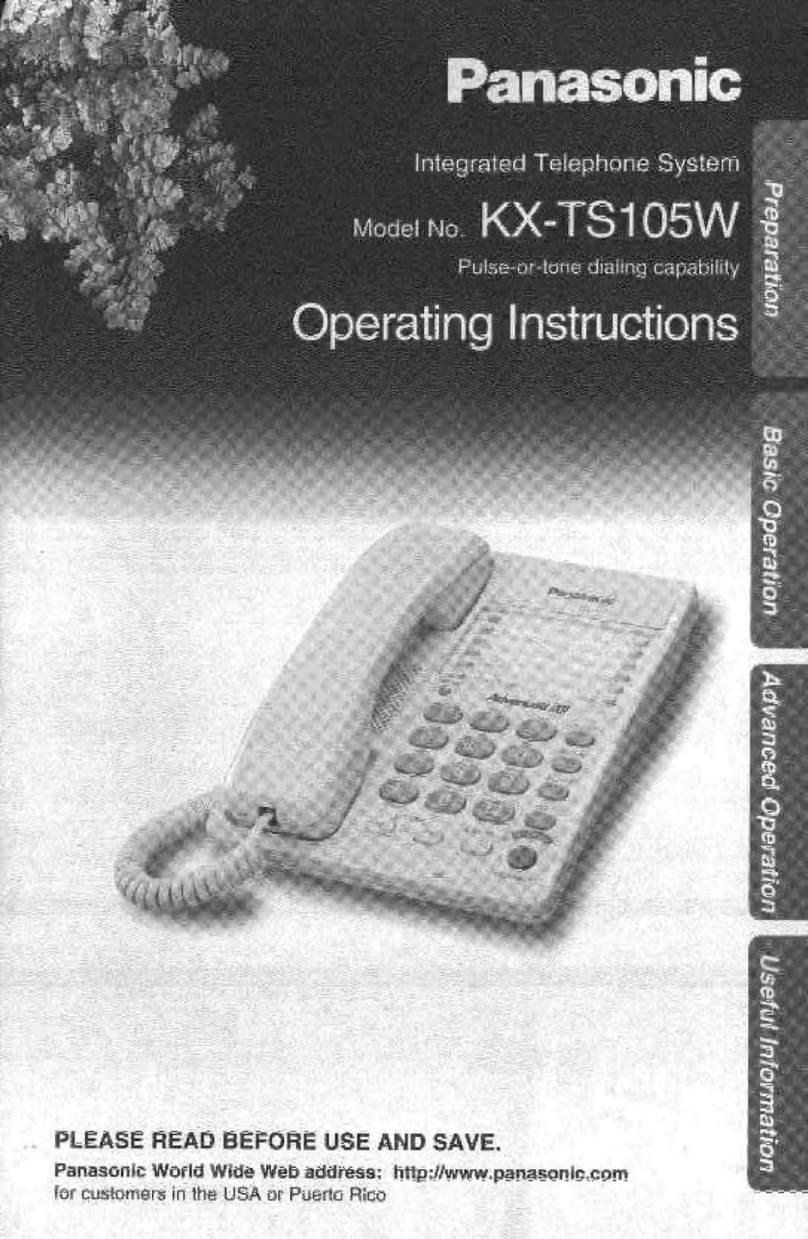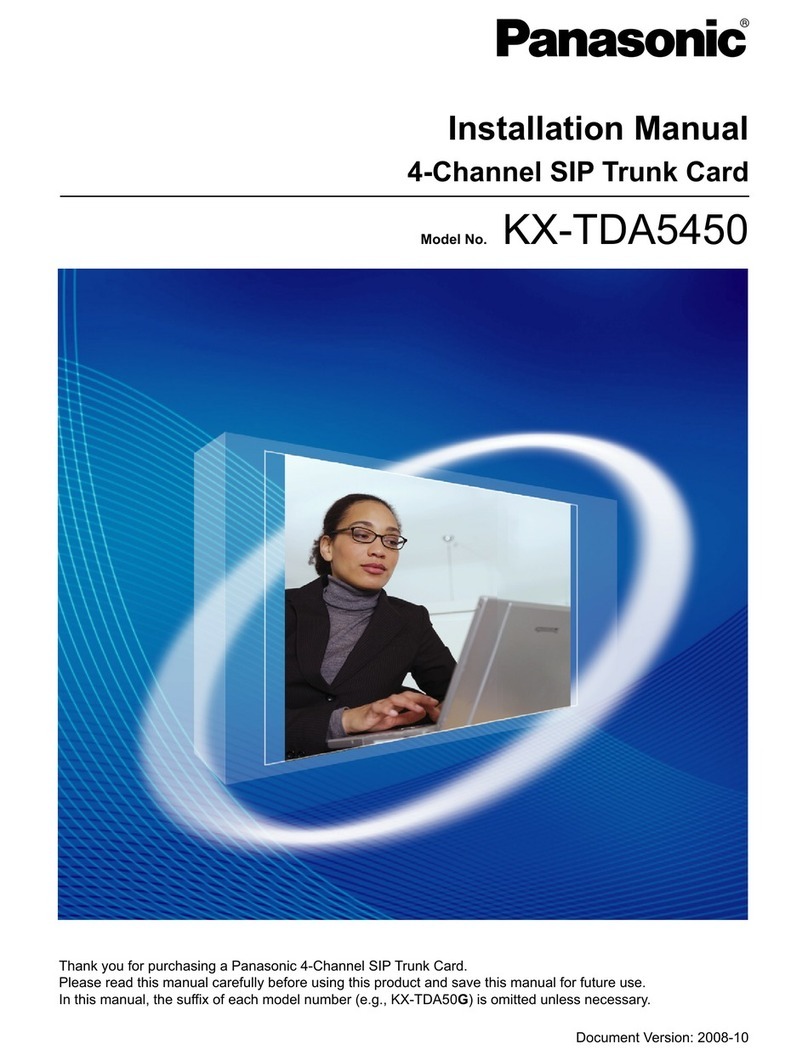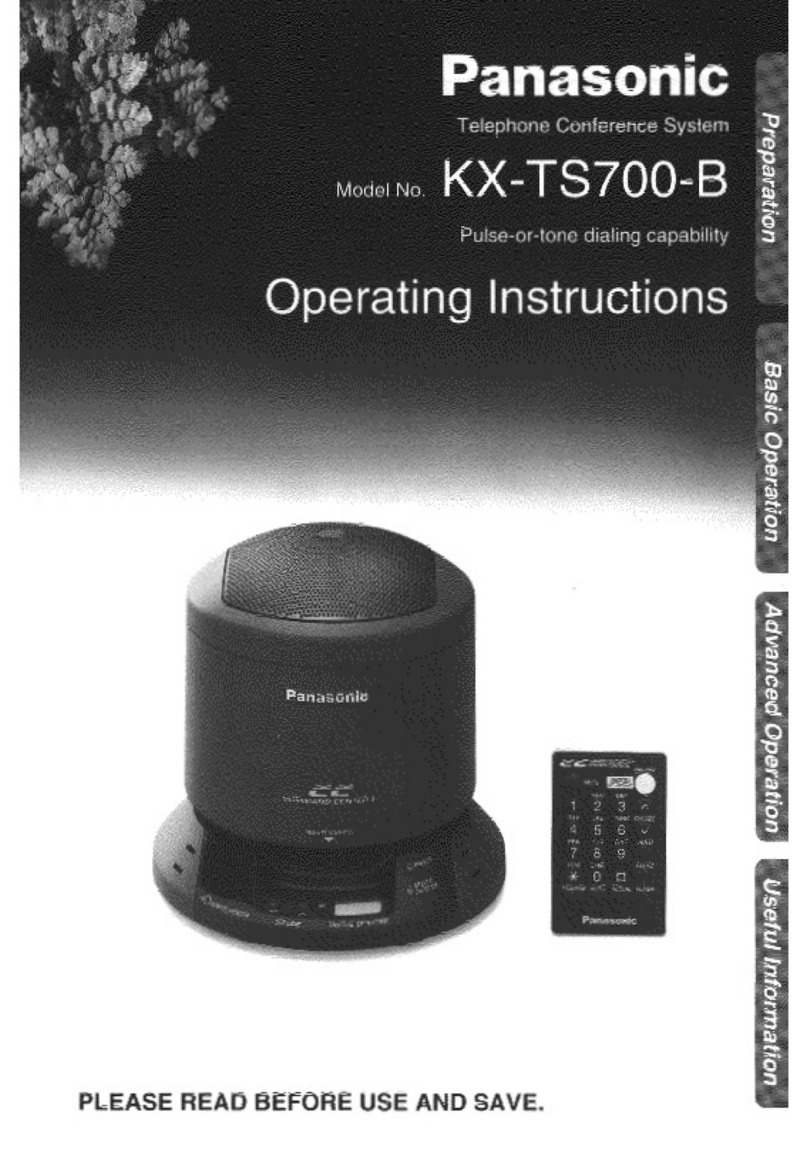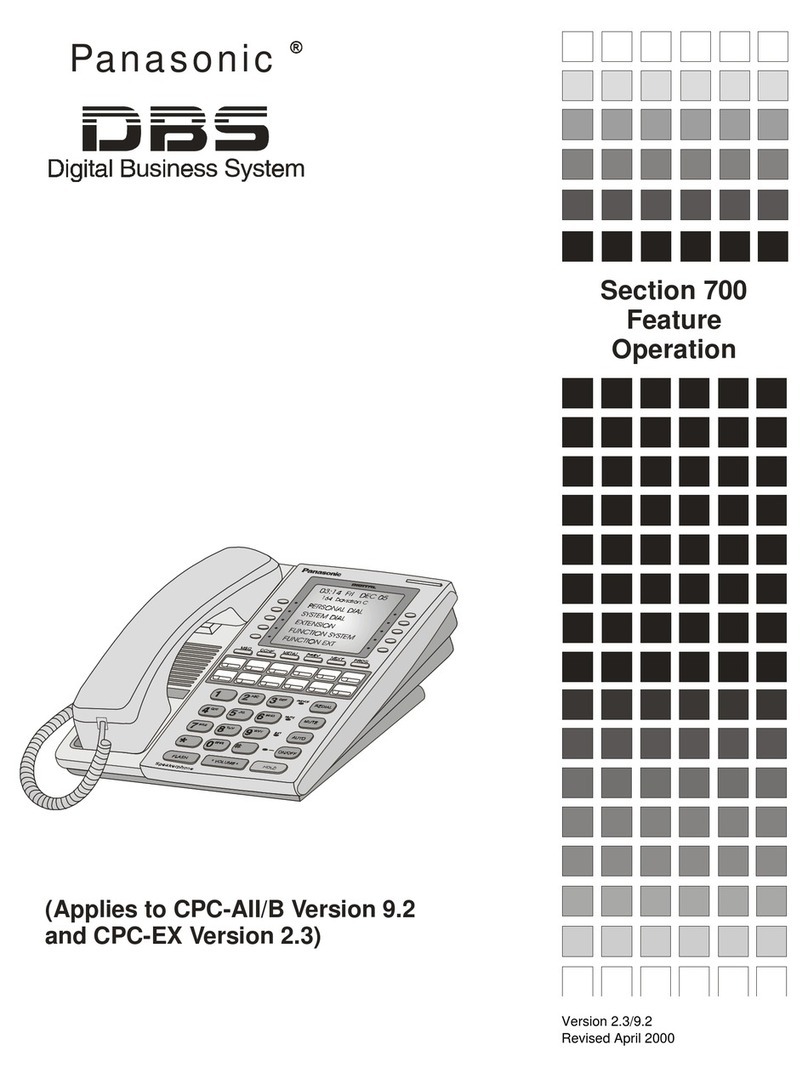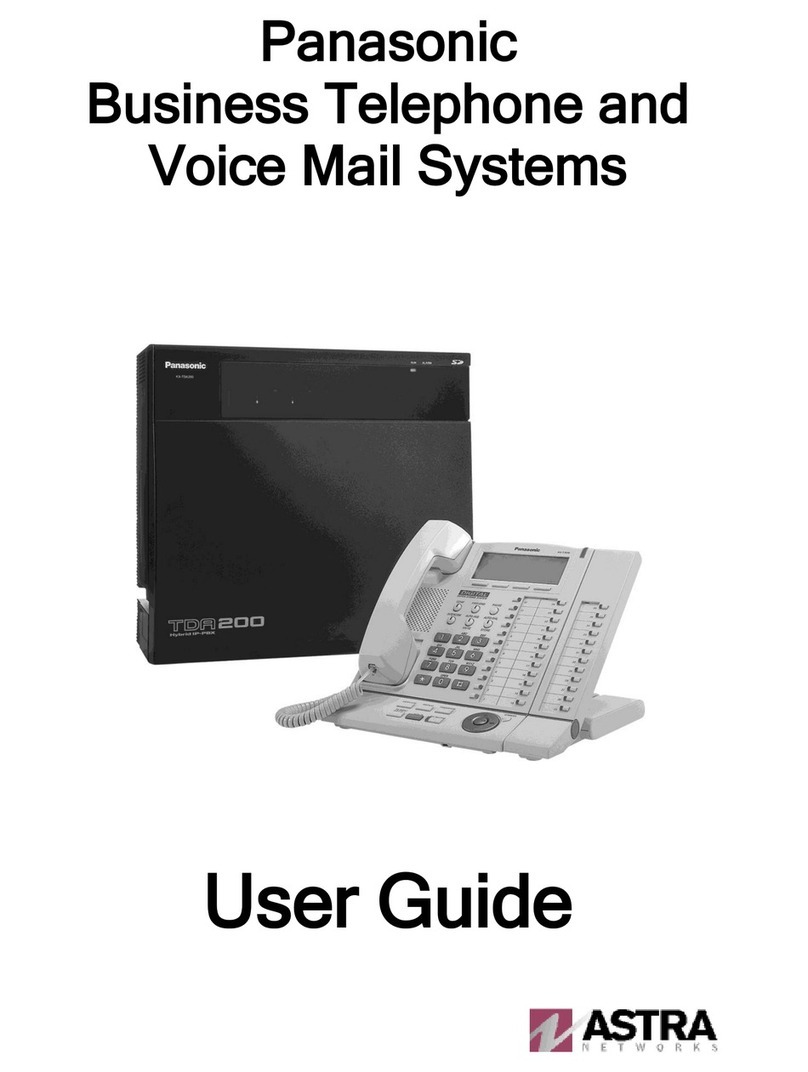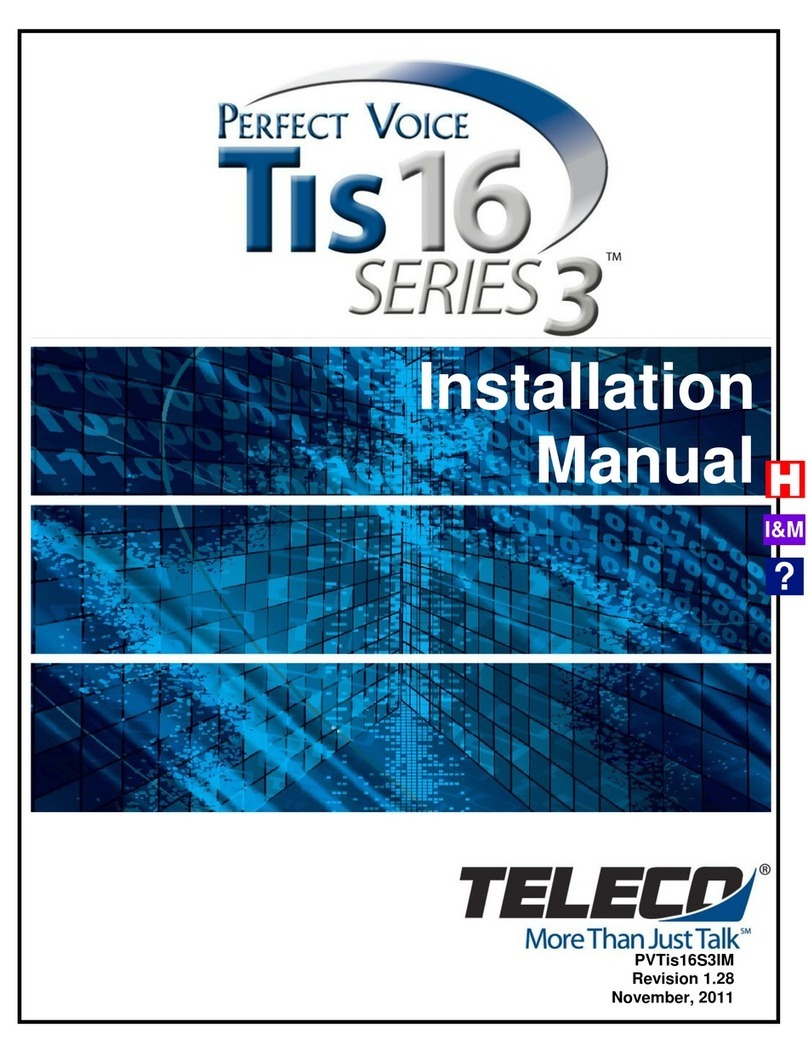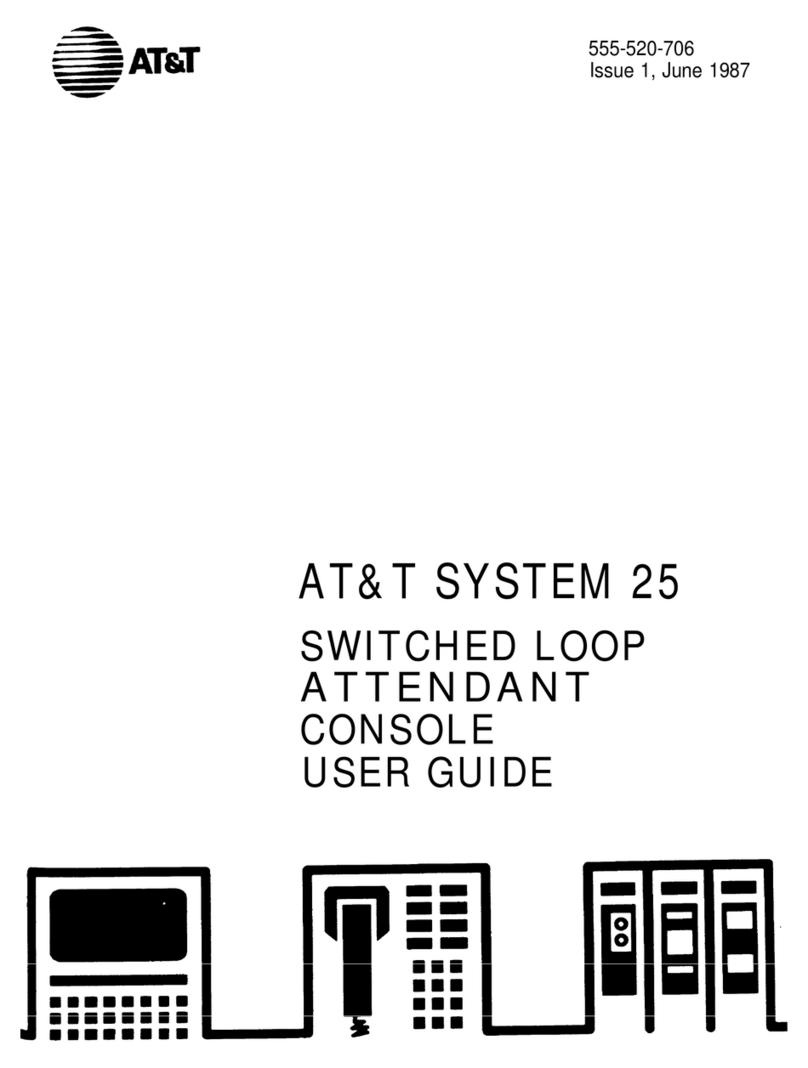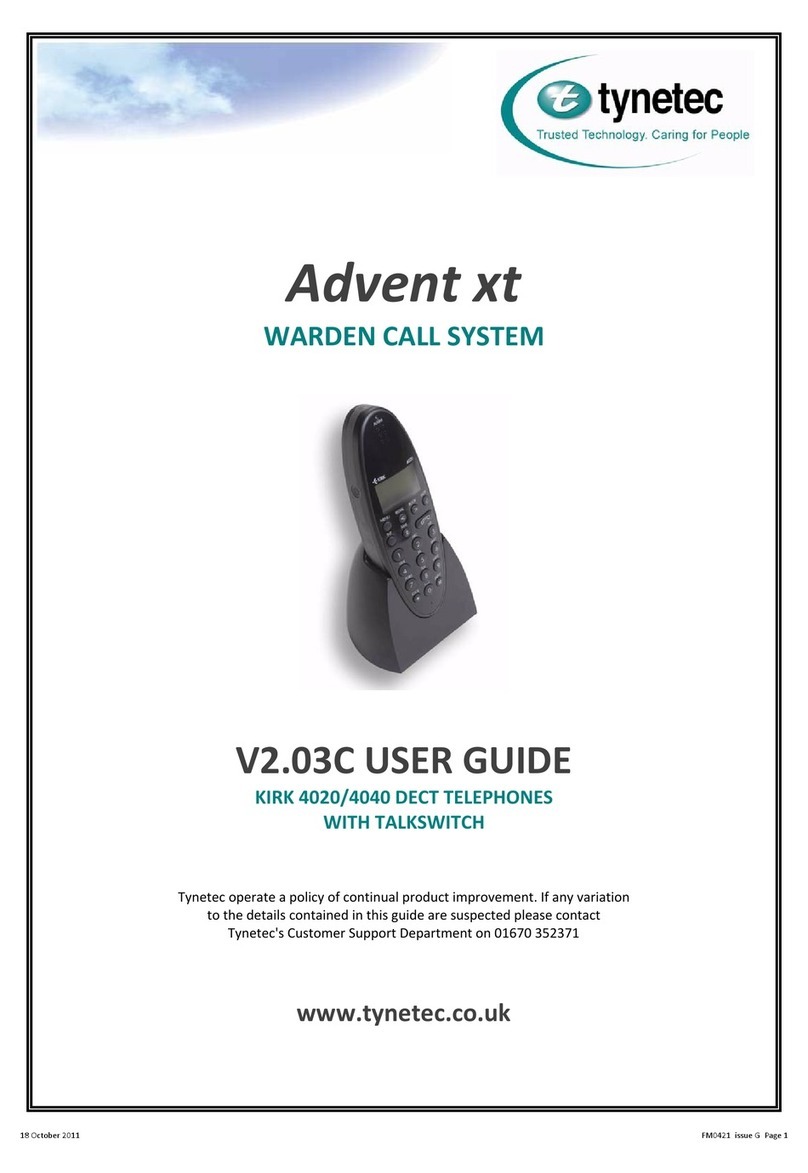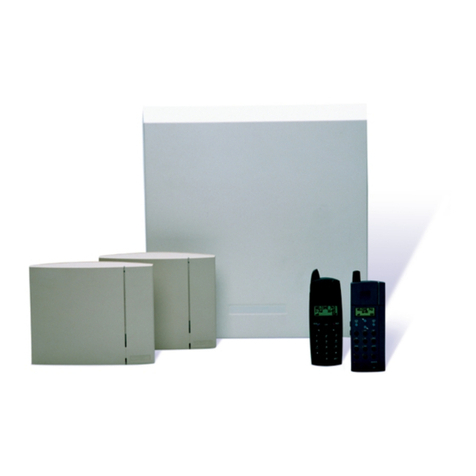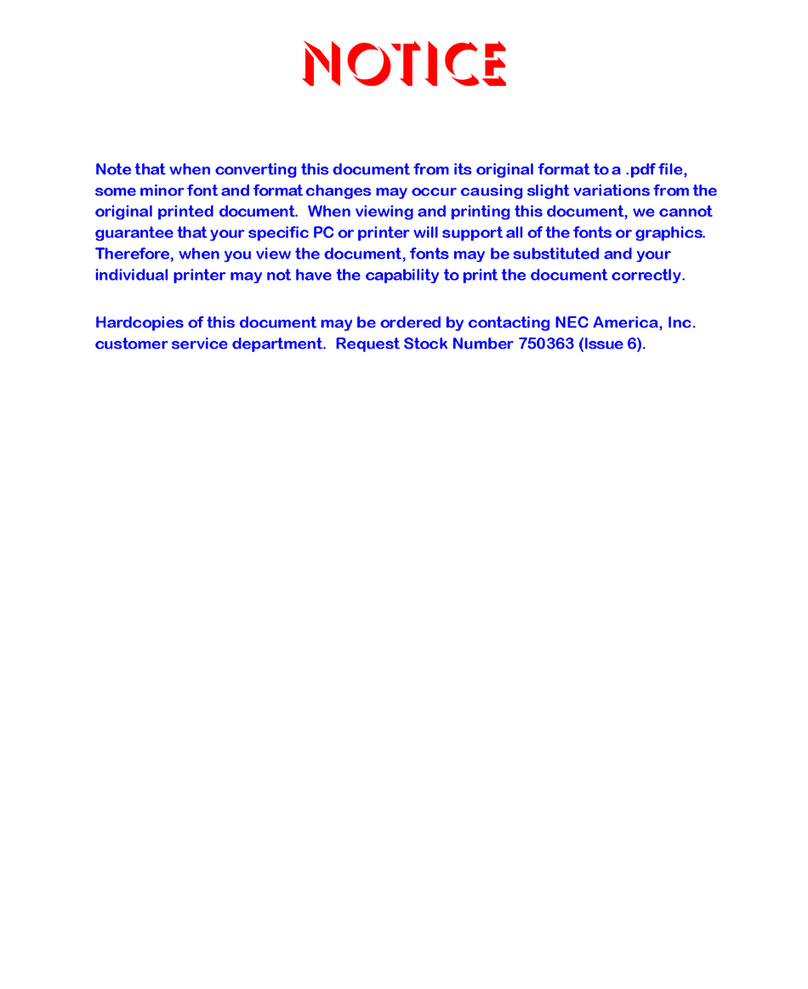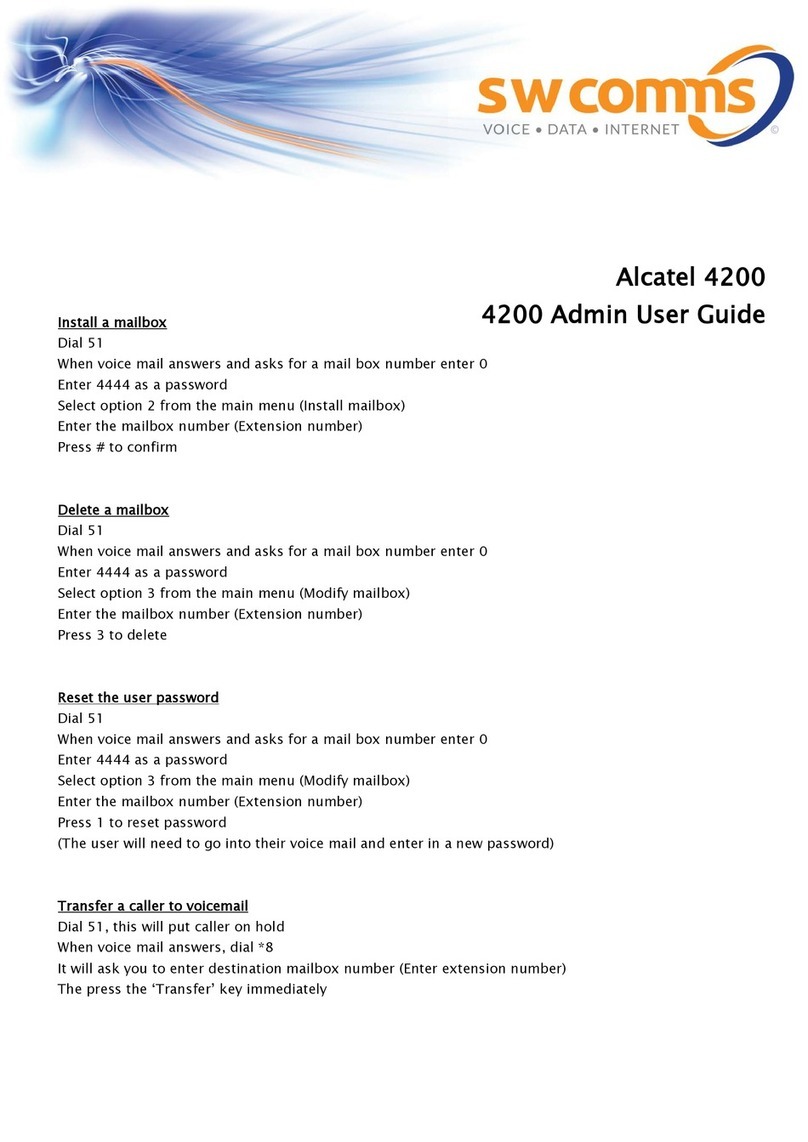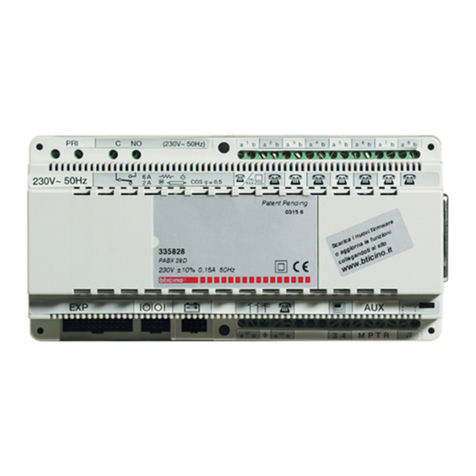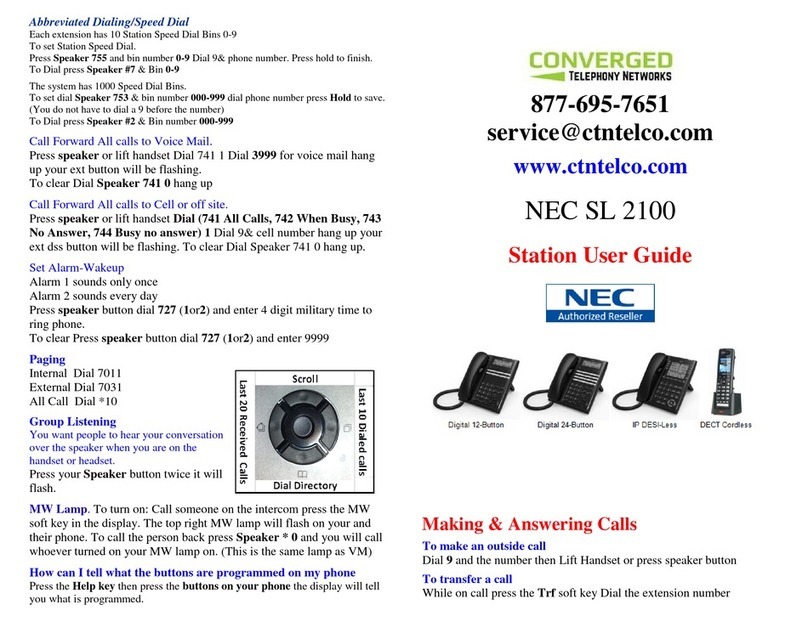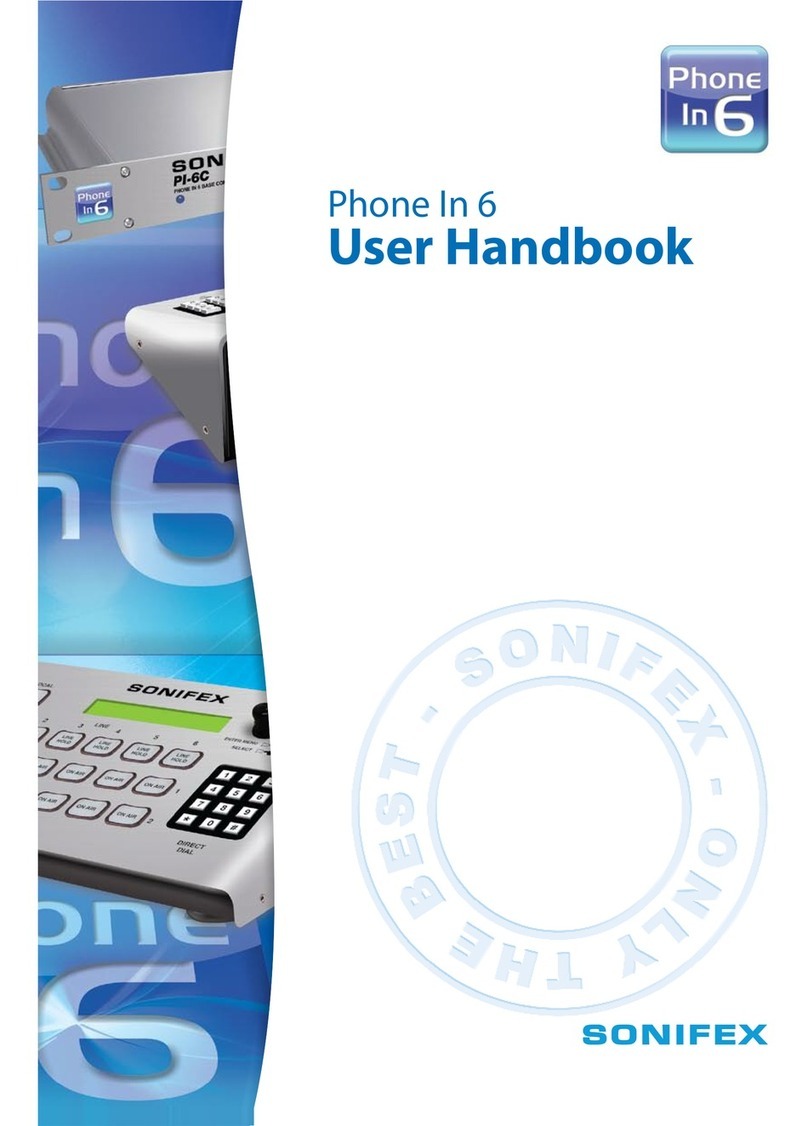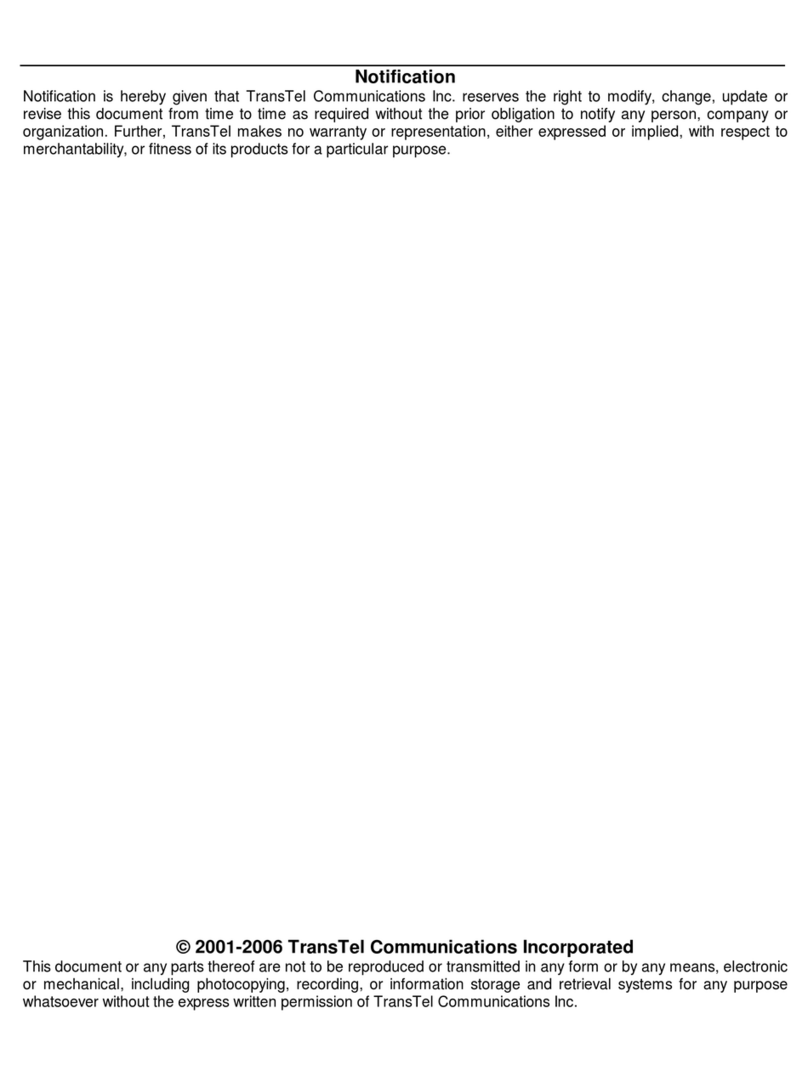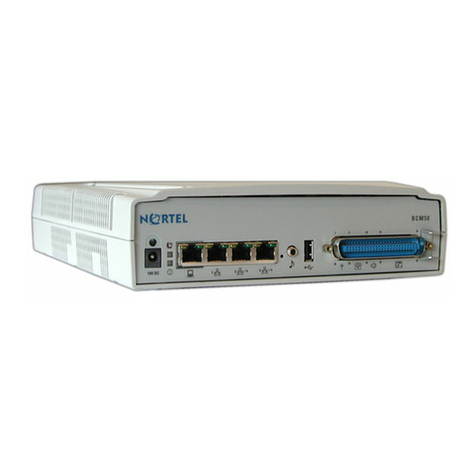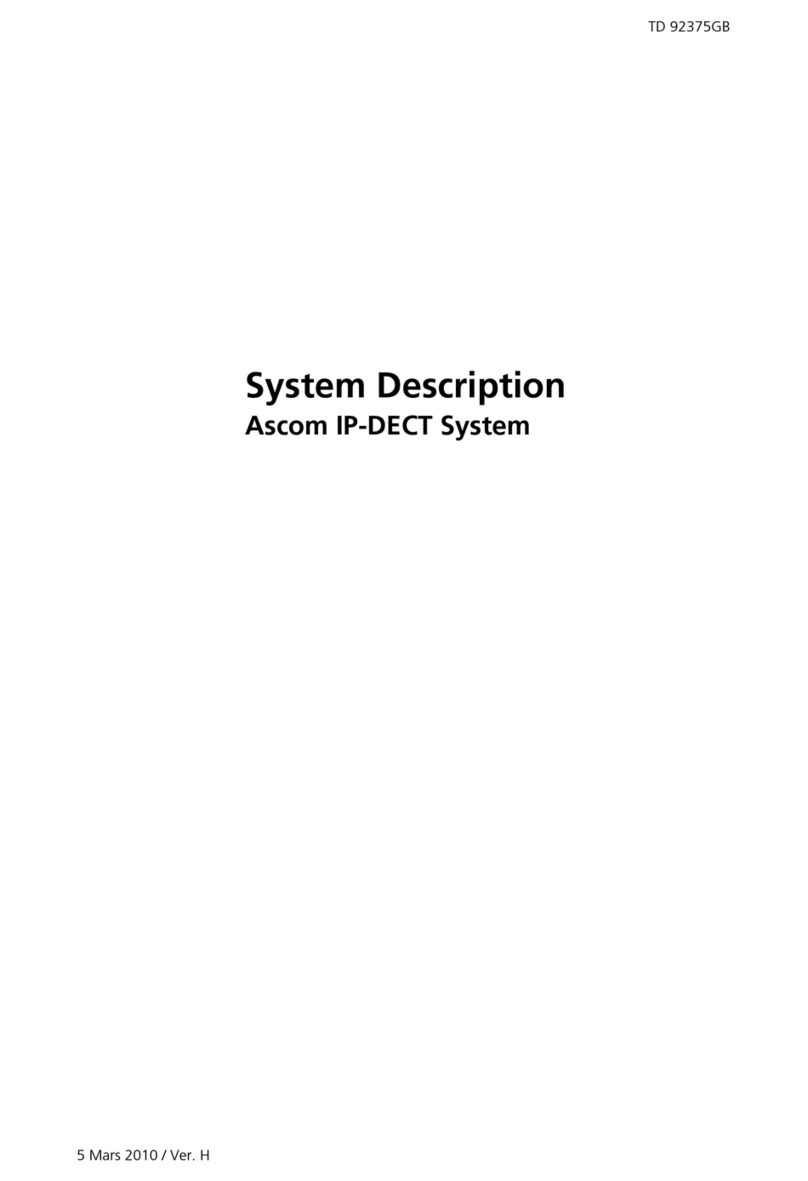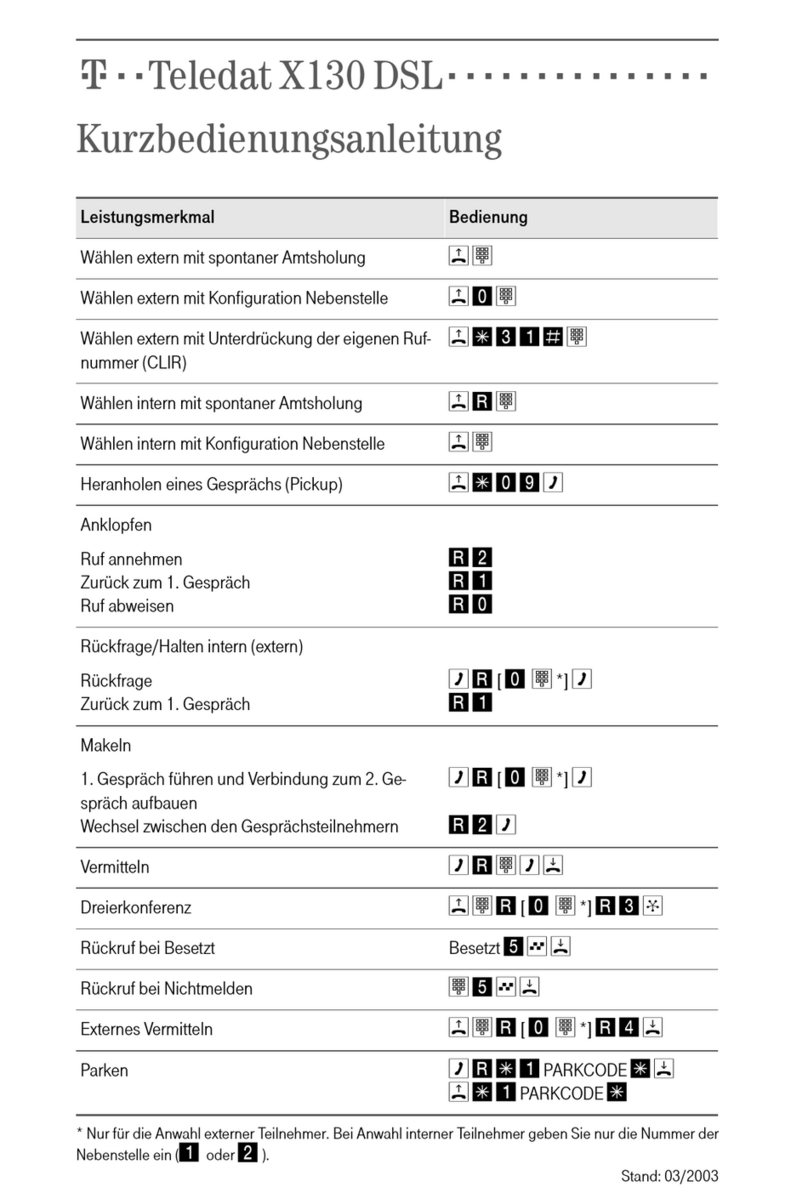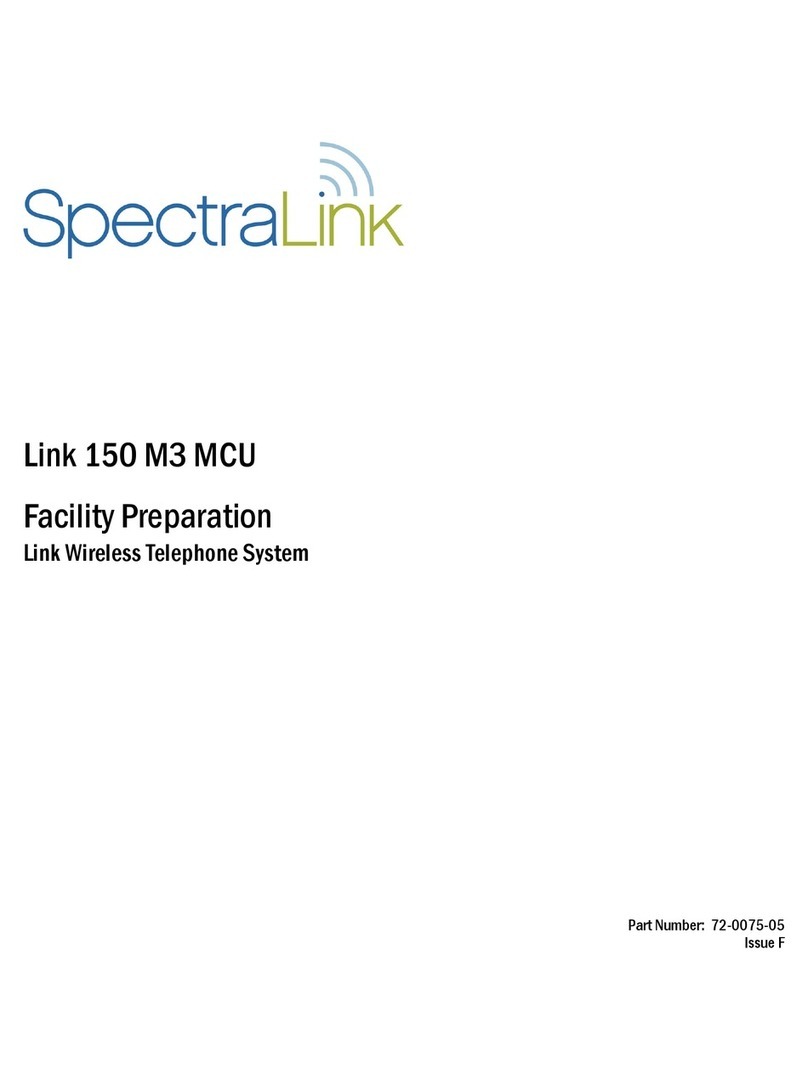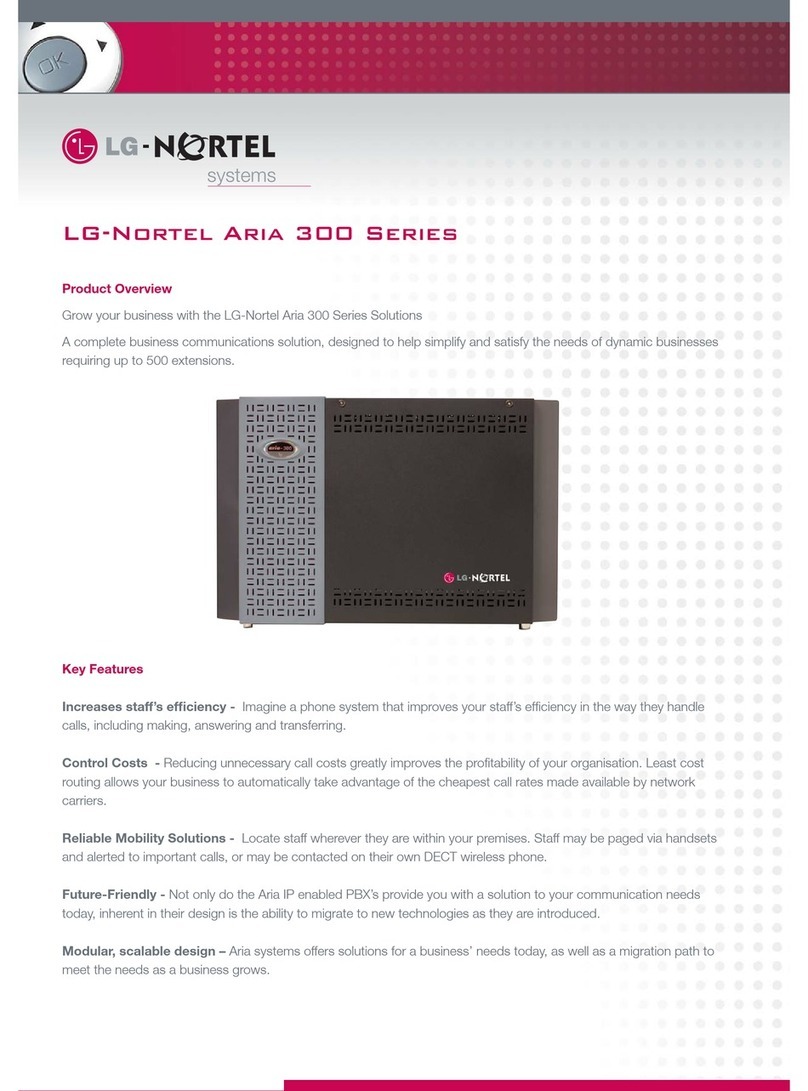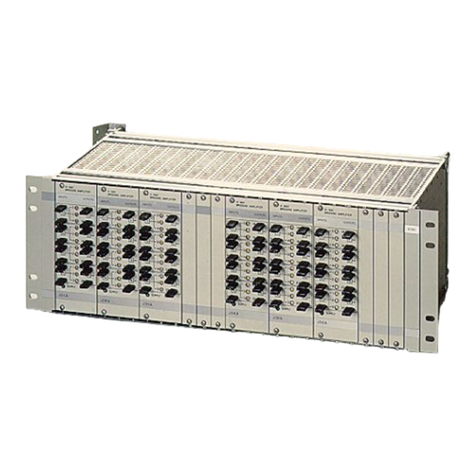
[301] TRS/Barring Denied Code ..................................................................................31
[302] TRS/Barring Exception Code .............................................................................31
[303] Special Carrier Access Code ..............................................................................31
[304] Emergency Number ............................................................................................31
[320] ARS Mode ..........................................................................................................31
[321] ARS Leading Number .........................................................................................32
[322] ARS Routing Plan Table Number .......................................................................32
[325] ARS Exception Number ......................................................................................32
[330] ARS Routing Plan Time Table ............................................................................32
[331–346] ARS Routing Plan Table (1–16) .................................................................33
[350] ARS Carrier Name ..............................................................................................33
[351] ARS Trunk Group for Carrier Access .................................................................33
[352] ARS Removed Number of Digits for Carrier Access ..........................................33
[353] ARS Carrier Access Code ..................................................................................33
2.1.7 Trunk Programming ........................................................................................................34
[400] LCOT/BRI Trunk Connection ..............................................................................34
[401] LCOT/BRI Trunk Name ......................................................................................34
[402] LCOT/BRI Trunk Group Number ........................................................................34
[409] LCOT/BRI Trunk Number Reference .................................................................34
[410] LCOT Dialling Mode ...........................................................................................34
[411] LCOT Pulse Rate ...............................................................................................34
[412] LCOT DTMF Minimum Duration .........................................................................35
[413] LCOT CPC Signal Detection Time—Outgoing ...................................................35
[414] LCOT CPC Signal Detection Time—Incoming ...................................................35
[415] LCOT Reverse Circuit ........................................................................................35
[416] LCOT Pause Time ..............................................................................................35
[417] LCOT Flash/Recall Time ....................................................................................35
[418] LCOT Disconnect Time ......................................................................................36
[420] BRI Network Type ..............................................................................................36
[421] BRI DIL/DDI/MSN Selection ...............................................................................36
[422] BRI Subscriber Number ......................................................................................36
[424] BRI Layer 1 Active Mode ....................................................................................36
[425] BRI Layer 2 Active Mode ....................................................................................36
[426] BRI Configuration ...............................................................................................37
[427] BRI TEI Mode .....................................................................................................37
[450] DIL 1:1 Destination .............................................................................................37
[451] DID Number ........................................................................................................37
[452] DID Name ...........................................................................................................37
[453] DID Destination ..................................................................................................38
[471] Host PBX Access Code ......................................................................................38
[472] Extension-to-Trunk Call Duration .......................................................................38
[473] Trunk-to-Trunk Call Duration ..............................................................................38
[475] DISA Silence Detection ......................................................................................38
[476] DISA Continuous Signal Detection .....................................................................39
[477] DISA Cyclic Signal Detection .............................................................................39
[490] Caller ID Signal Type ..........................................................................................39
[491] Pay Tone Signal Type ........................................................................................39
2.1.8 COS Programming .........................................................................................................40
[500] Trunk Group Number ..........................................................................................40
[501] TRS/Barring Level ..............................................................................................40
[502] Trunk Call Duration Limitation ............................................................................40
[503] Call Transfer to Trunk .........................................................................................40
[504] Call Forwarding to Trunk ....................................................................................40
[505] Executive Busy Override ....................................................................................41
[506] Executive Busy Override Deny ...........................................................................41
PT Programming Manual 5
Table of Contents

